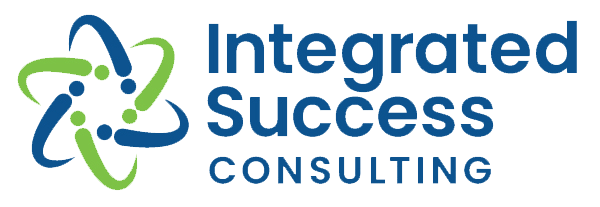I’m no master gardener, but I know that you can’t just toss out some seeds and sprinkle a little water to succeed at growing, say, an apple tree. First, you have to till the ground and add nutrients to the soil to give those seeds the right environment to thrive. Growing a healthy, diverse and inclusive workplace community is much like that. As a leader, you can take steps to prepare an environment that attracts and retains employees with diverse talents and experiences. When you do, you will see broad organizational benefits!
The fruit of diversity is success.
A thriving workplace community is one where people from all sorts of different backgrounds, ages and genders, each with unique experiences and perspectives, participate collectively in running your business. Every person’s ideas are heard. Their individual work is valued. Many studies have shown that including a diverse array of knowledgeable collaborators in decision-making leads to higher quality outcomes. Employees who are respected as individual contributors are more productive and engaged. Just as the gardener has specialized cultivation tools, there are proven leadership techniques you can use to enhance the growth of a diverse community at your workplace. With time, you will enjoy the fruits of your labor: more successful business results!
Cultivate inclusivity for a thriving community culture.
Your organization has likely covered diversity from a compliance perspective, such as meeting Equal Employment Opportunity laws. You may have implemented diversity training and other awareness programs. This is very important work, because increasing diversity of thought—by recruiting and retaining people of varied backgrounds and skills—is critical to your organization’s success. To be fully effective, though, you must partner employee diversity programs with a leadership focus on building an inclusive culture and dismantling barriers to participation.
In a recent article Deloitte provides a breakdown of how diversity and inclusion operate in the workplace and articulate a useful model for inclusivity. They identified these four inter-related elements of inclusion, which you can cultivate at your organization:
1. Fairness and respect. Equity, or giving everyone what they need to be successful, forms the basis of an inclusive community. Basic courtesy demands that people be allowed to participate in the workplace without the constraints of discrimination or favoritism.
2. Valued and belonging. Employees need to feel that they are appreciated for their authentic qualities. To perform at their best, people also need to feel like a member of the group, whose individual contributions are important to the team’s success.
3. Safe and open. People can only participate in your workplace if they feel safe to express their unique ideas and honest opinions. They need to trust that their input will be heard, that others assume their intentions are good, and that they won’t face retaliation for expressing dissent.
4. Empowered and growing. In the most inclusive workplace communities, employees and their managers work together to identify projects, educational opportunities and career tracks that build on the individual’s strengths and interests—and which benefit the organization through their increased engagement, higher productivity and greater successes.
Three leadership techniques that encourage an inclusive environment.
With attentive leadership and a welcoming environment, your community culture will grow organically into a place where individuals of all varieties thrive. Gardeners know that once the tree starts growing fast, it needs some support and guidance to stay healthy over the long term. Similarly, leaders can apply some specific approaches, like the three described below, to effectively sustain an inclusive workplace community.
- Flex your style. As the leader, it is your job to effectively communicate with all employees. To do so, you have to intentionally adapt your leadership behaviors to suit the individual expectations and needs of your team members. Whether you’re leading multi-generational teams or people of different cultural backgrounds, you need some awareness of employees’ group identities. More important, however, is this simple rule: don’t treat people like categories, but as individuals.
- Harness moments of excellence. Use a strengths-based method to highlight and build on the things people do right and what they are good at, instead of just criticizing less-than-optimal performance. Approach business improvements by collectively envisioning your desired end-state and working toward that, instead spending all your time identifying and solving problems. This positive Appreciative Inquiry approach motivates all employees to participate and builds excitement around advancing the community’s shared goals.
- Adjust your systems to positively influence behaviors. In addition to training and awareness programs to improve workplace diversity and inclusion, most organizations also need to adjust their broader systems and work processes. Biases that disadvantage some workers can be unintentionally reinforced in your systems. Leaders need to intentionally support comprehensive inclusion in all aspects of your business. One way to do this is to champion the use of data, so you can better understand and eliminate the barriers to participation people experience in your organization.
Seek expert advice when you need to.
These are just a few of the many tools you can use to grow a diverse and inclusive community at your workplace. Creating diverse work teams and incorporating the wide range of best ideas that emerge from them allows you to address business goals from all aspects, so the solutions you implement will be more broadly satisfying and more likely to succeed. As a leadership coach and human resources expert, I can teach you how to use these and other tools effectively, and how they can be adapted to solve additional organizational goals that you may have, beyond inclusivity.
Gardeners can go to their local plant clubs and extension services for advice when they reach the limits of their own experience. Who can you turn to? Let Integrated Success be your advisor in developing inclusive leadership and team building practices. Contact us any time.

